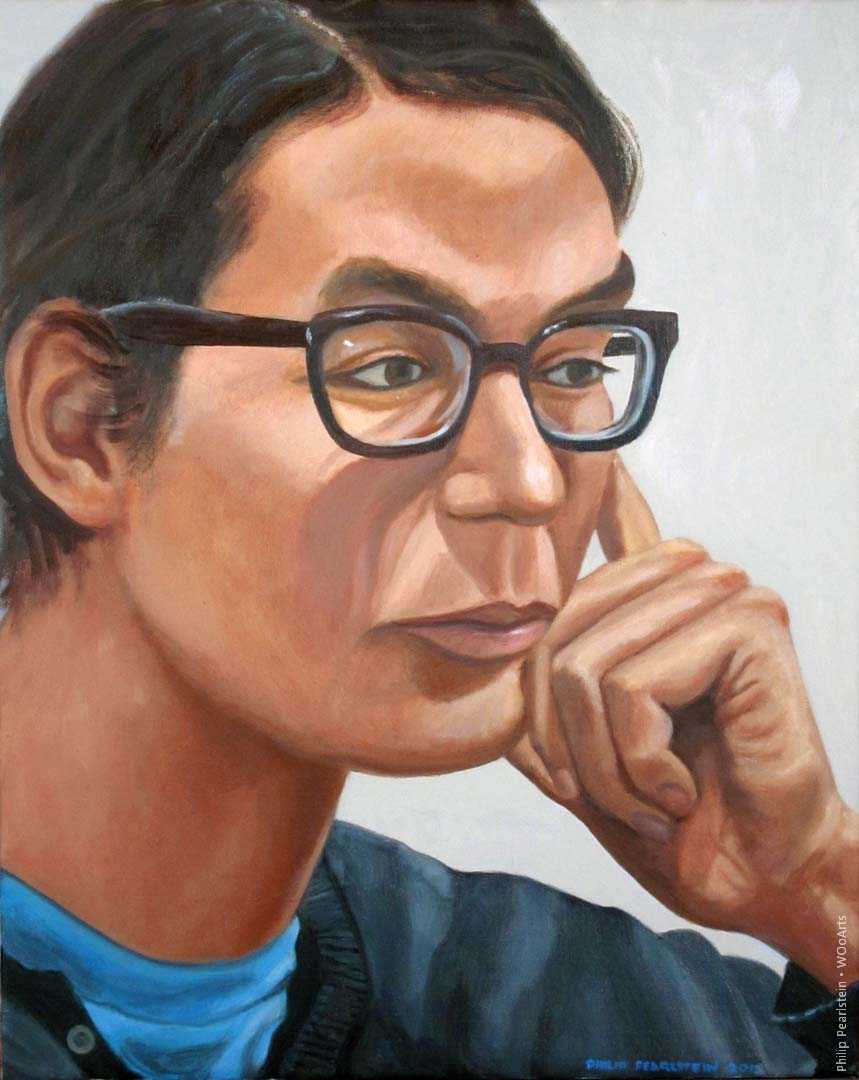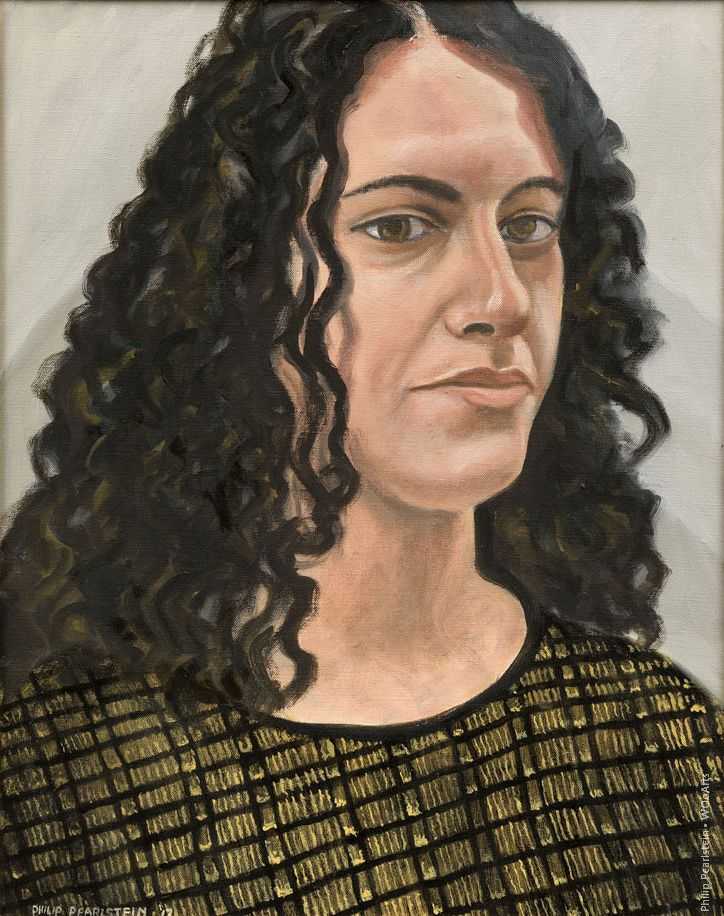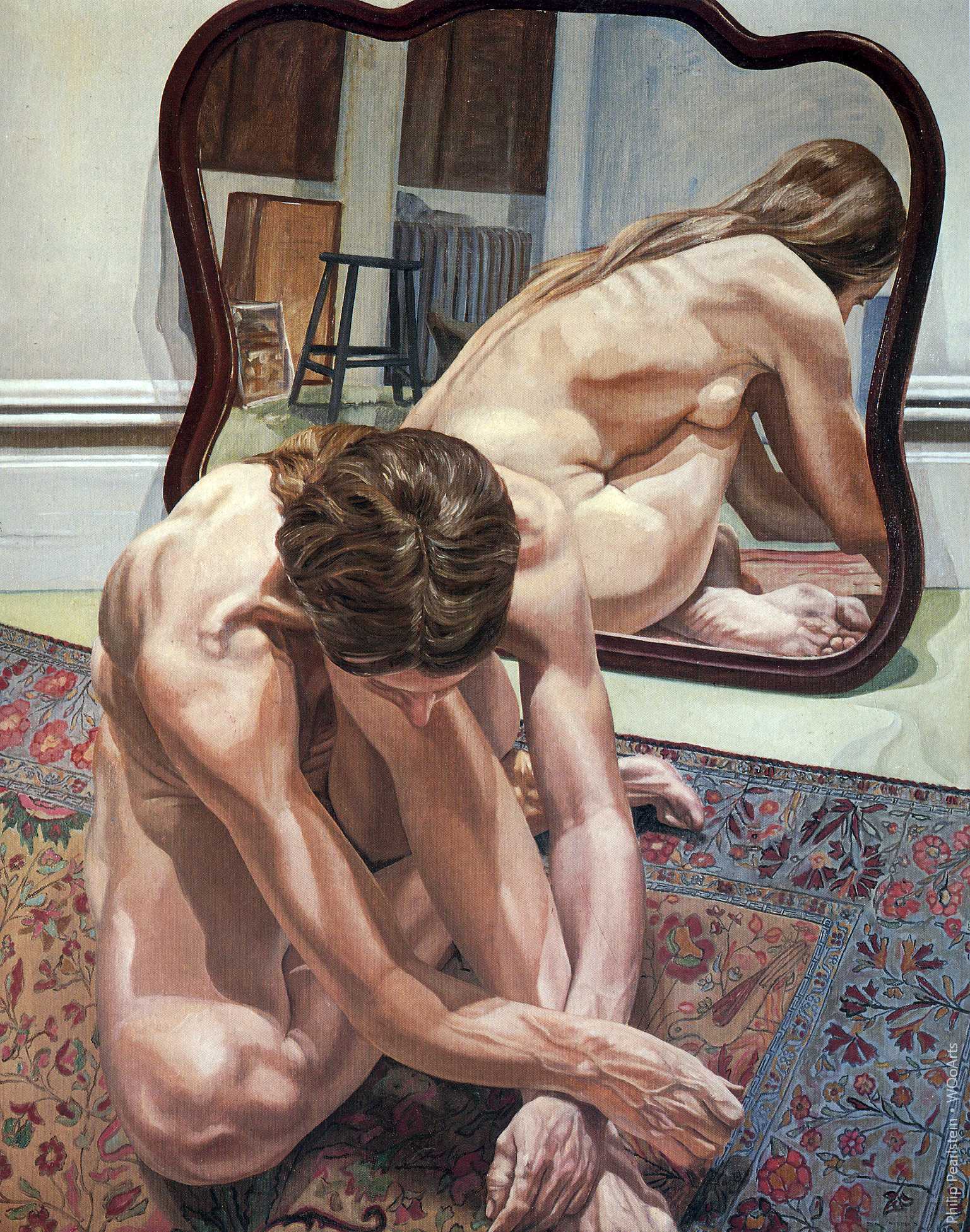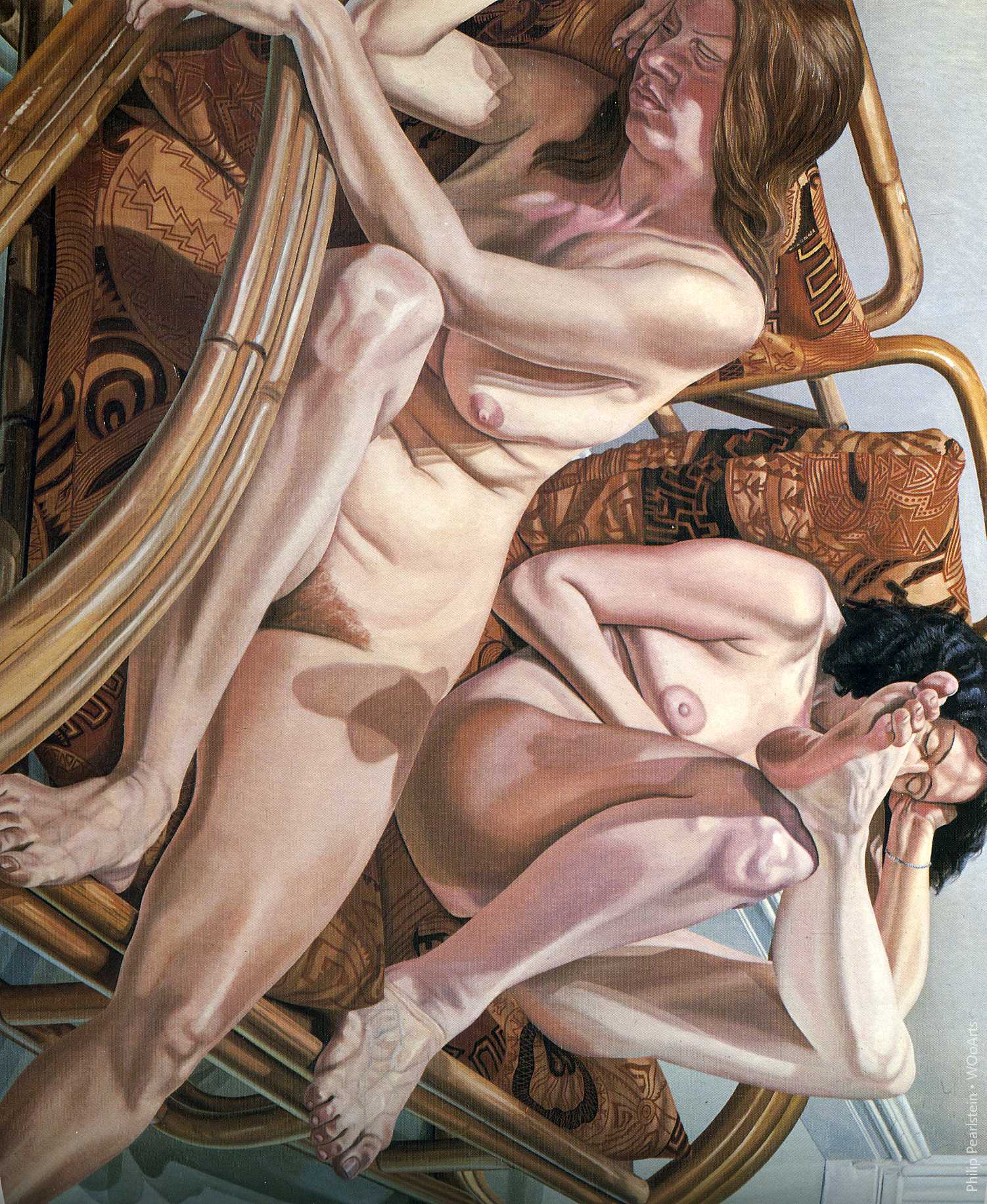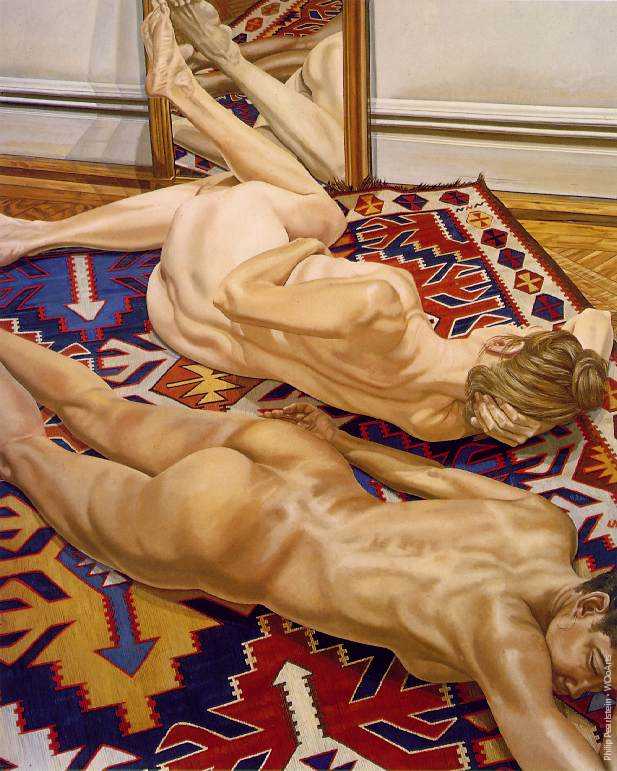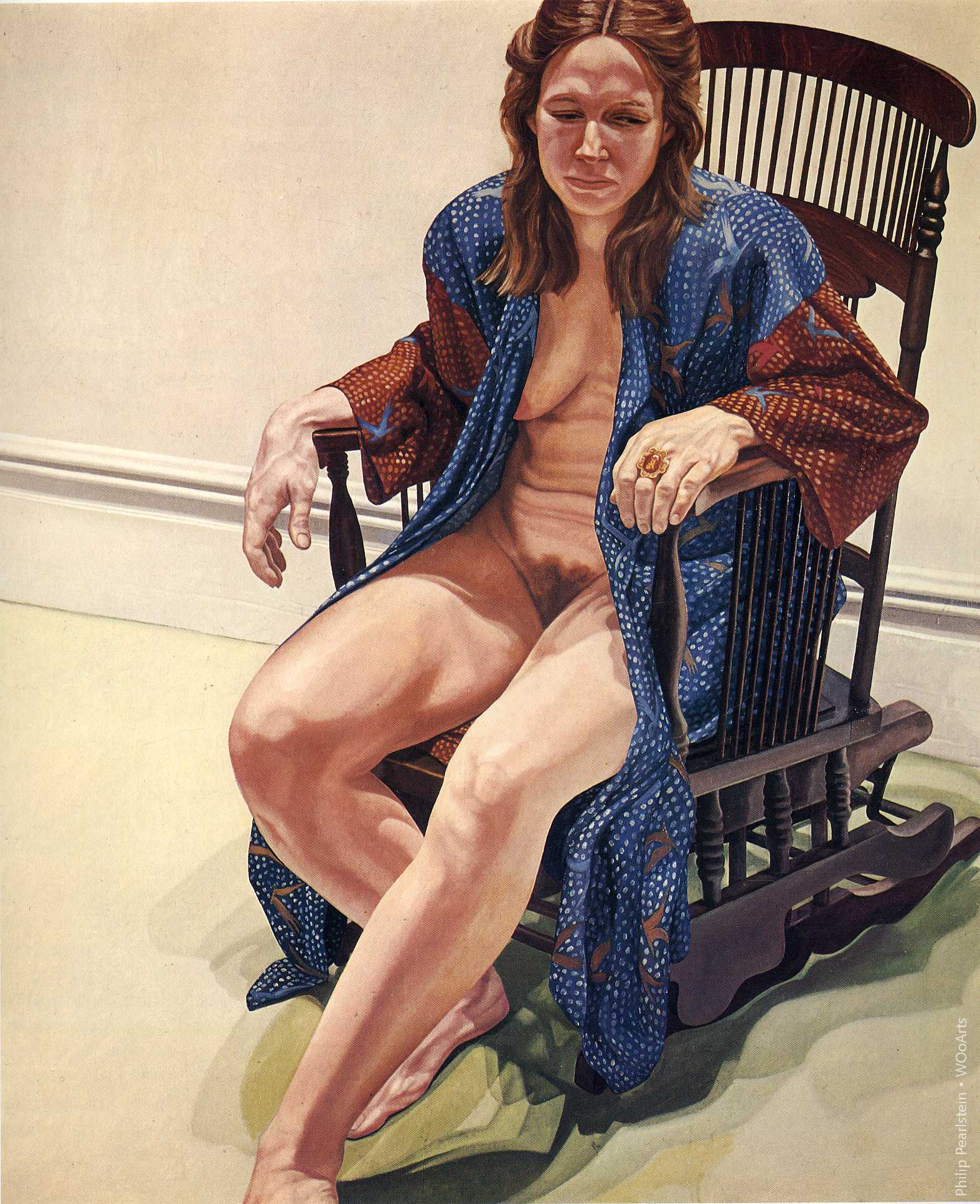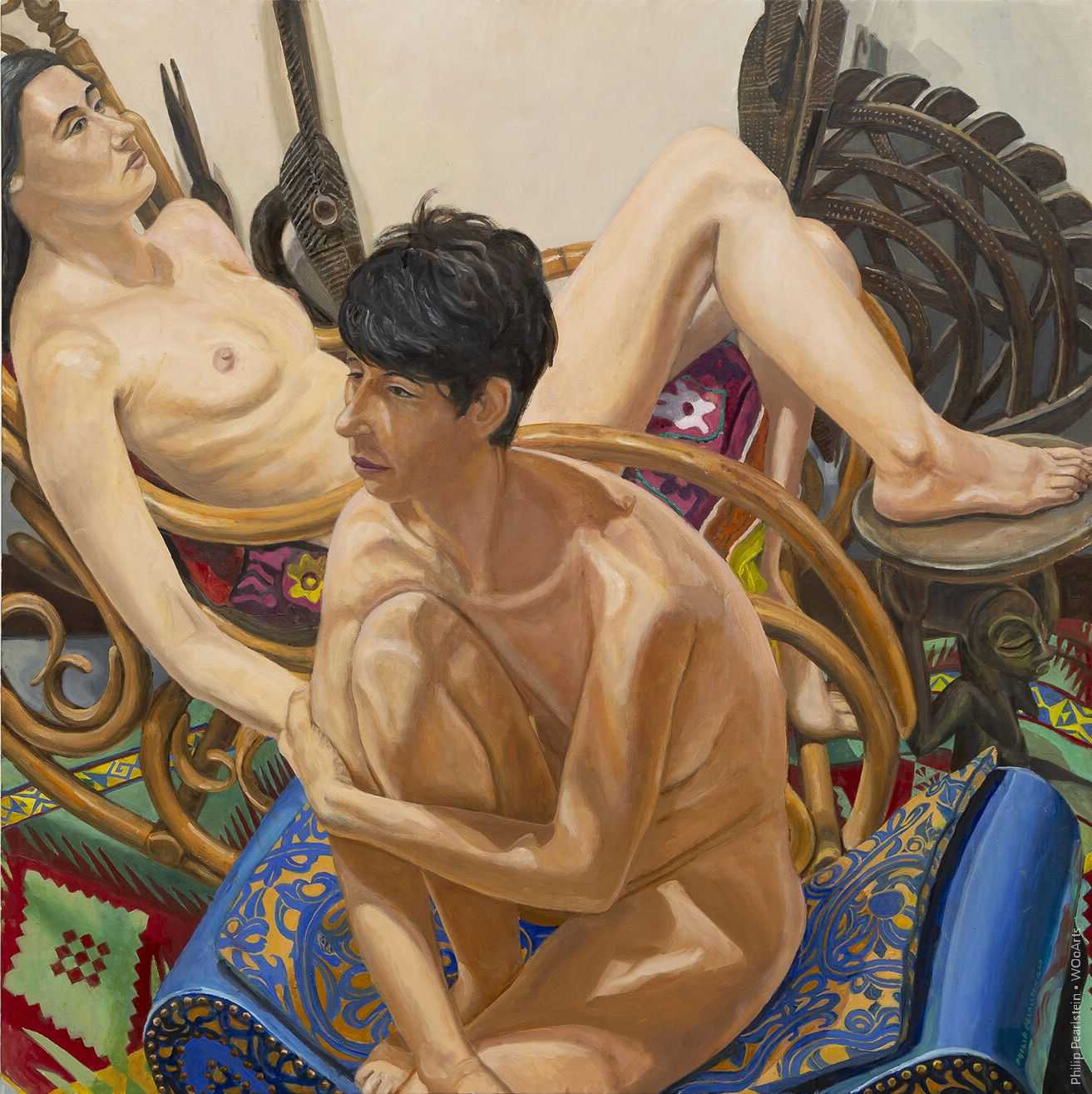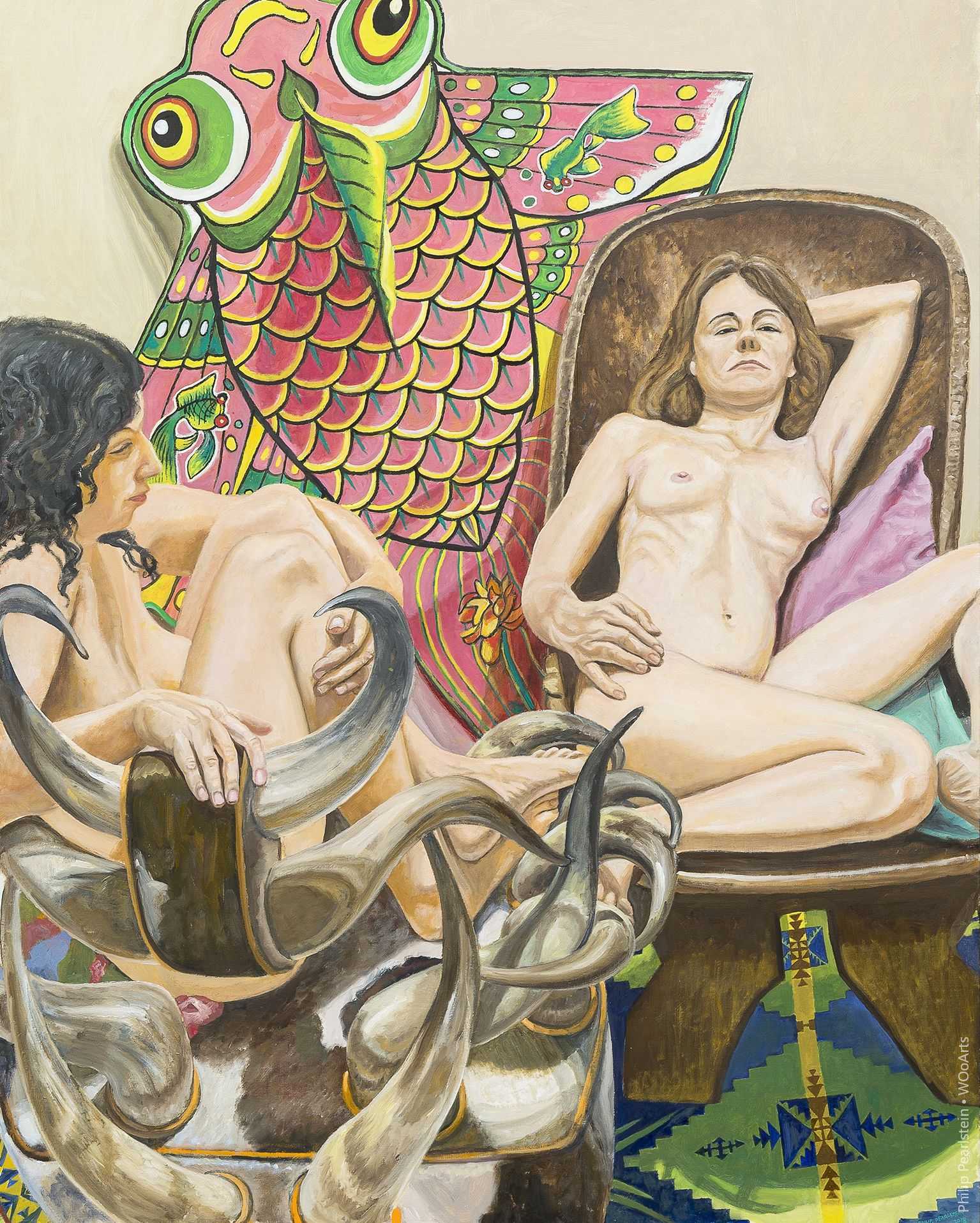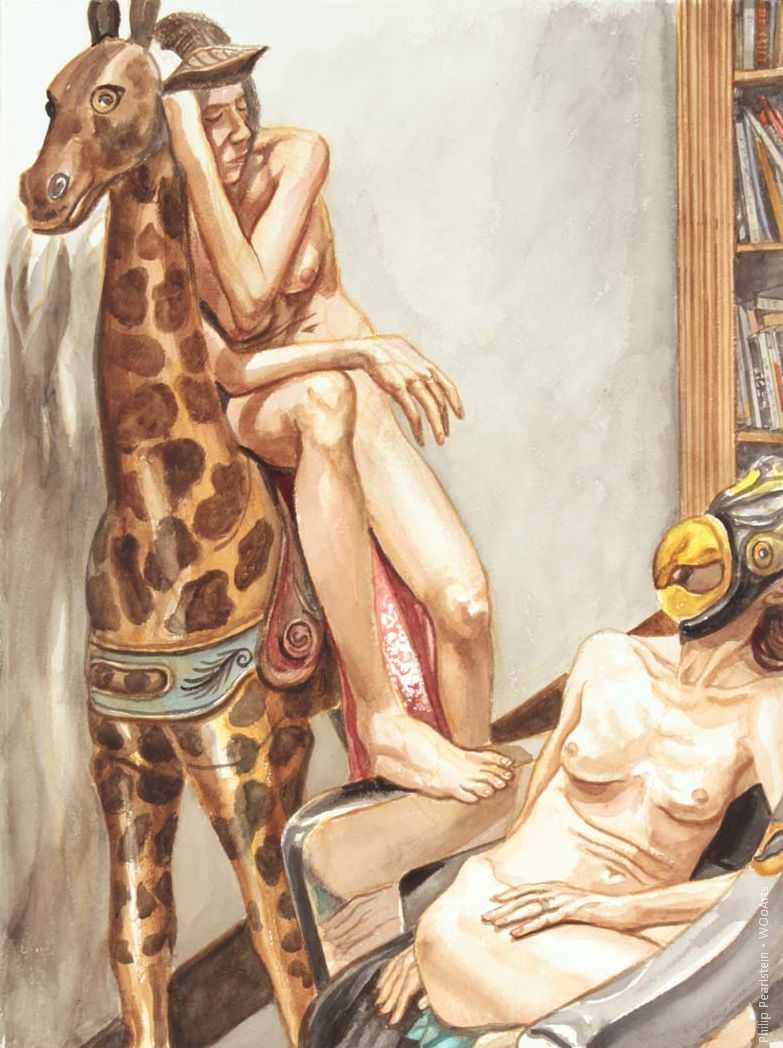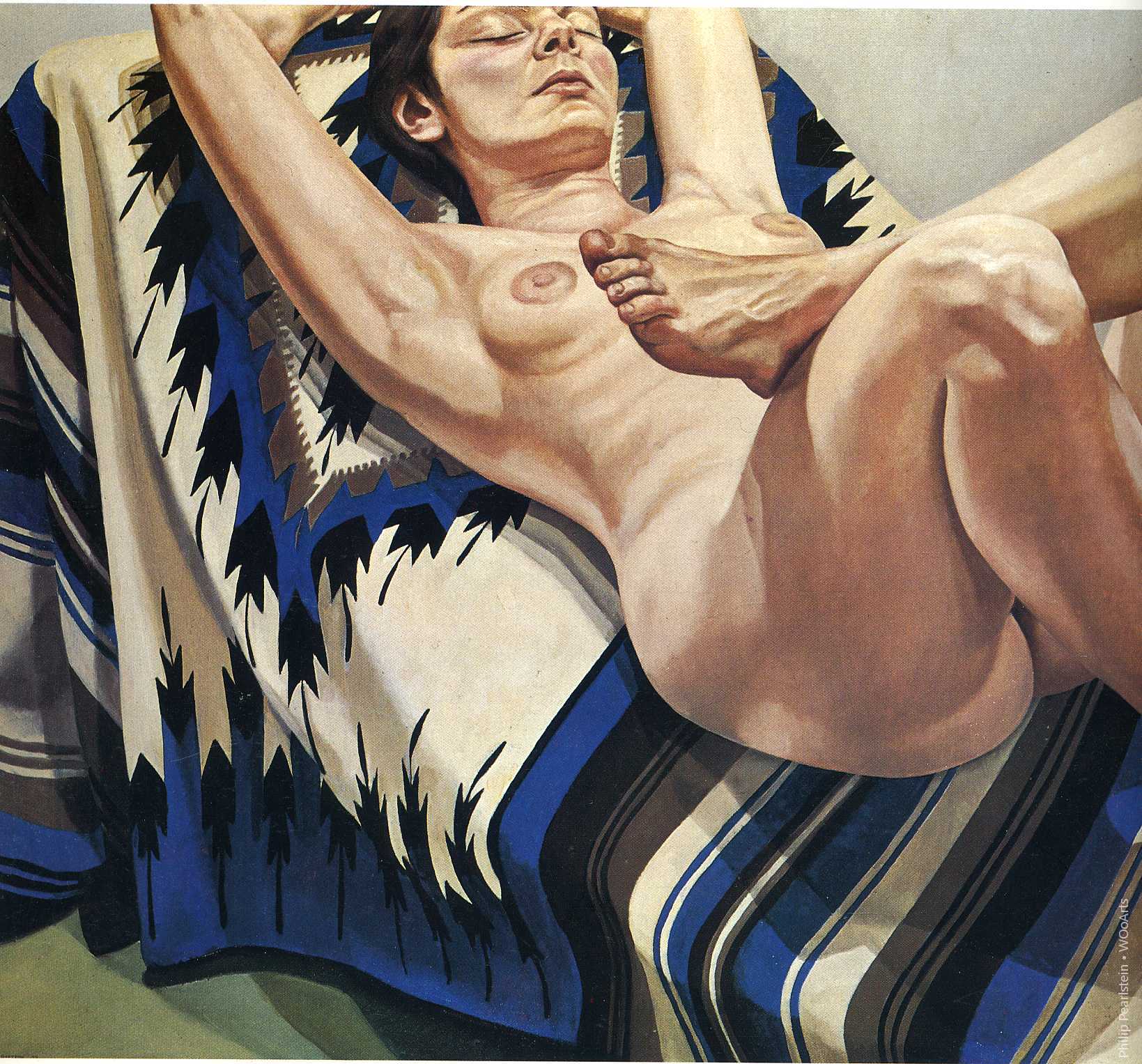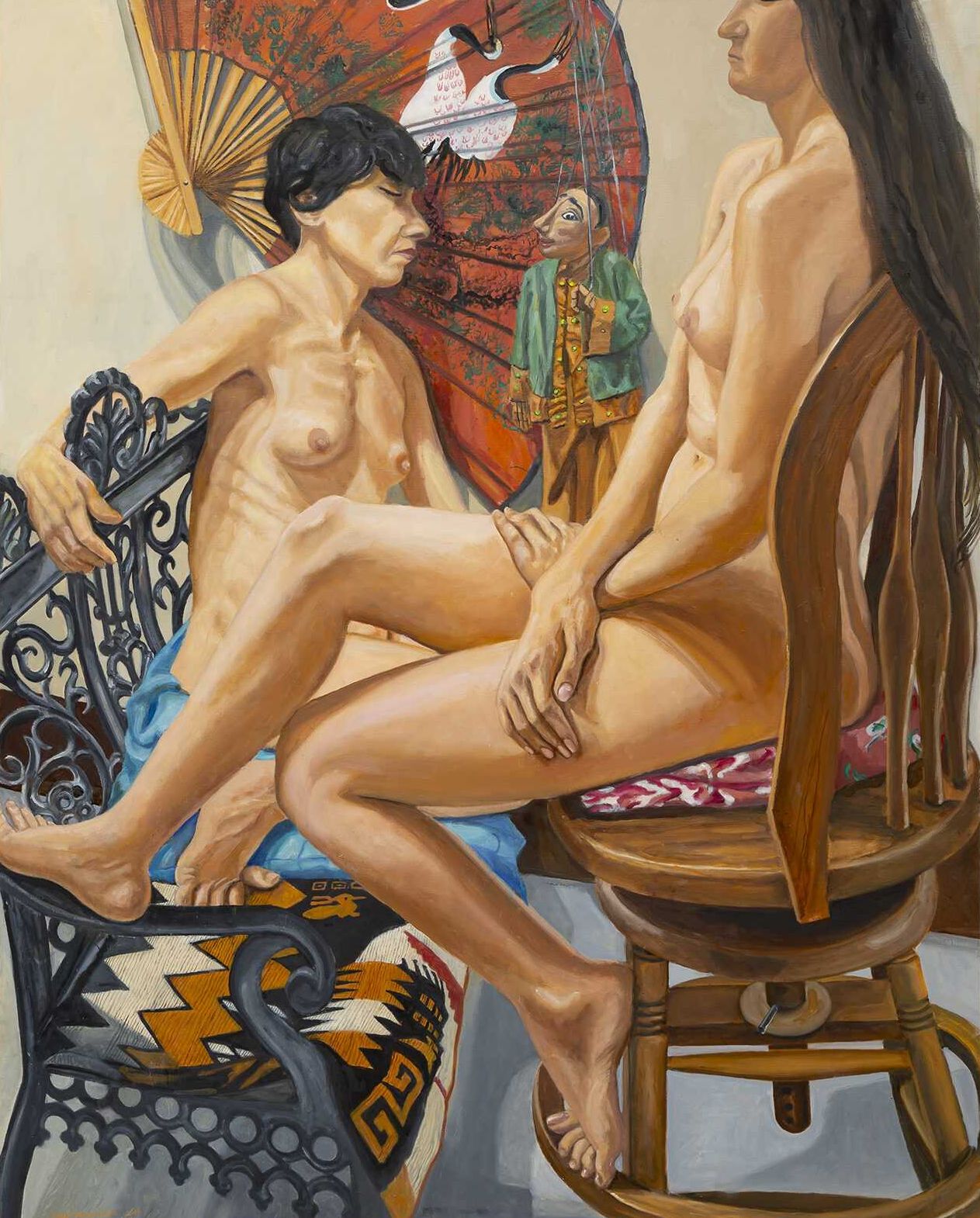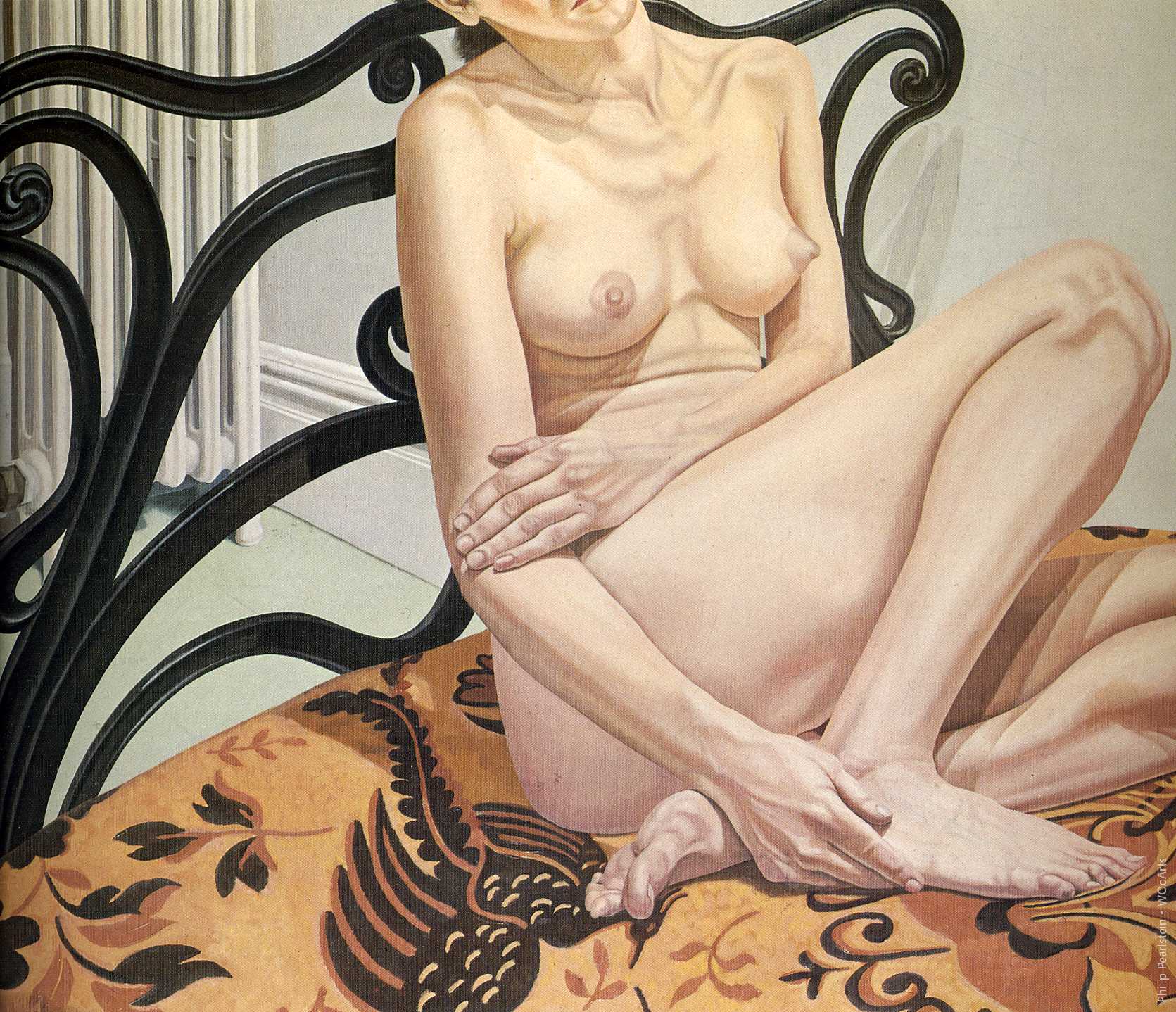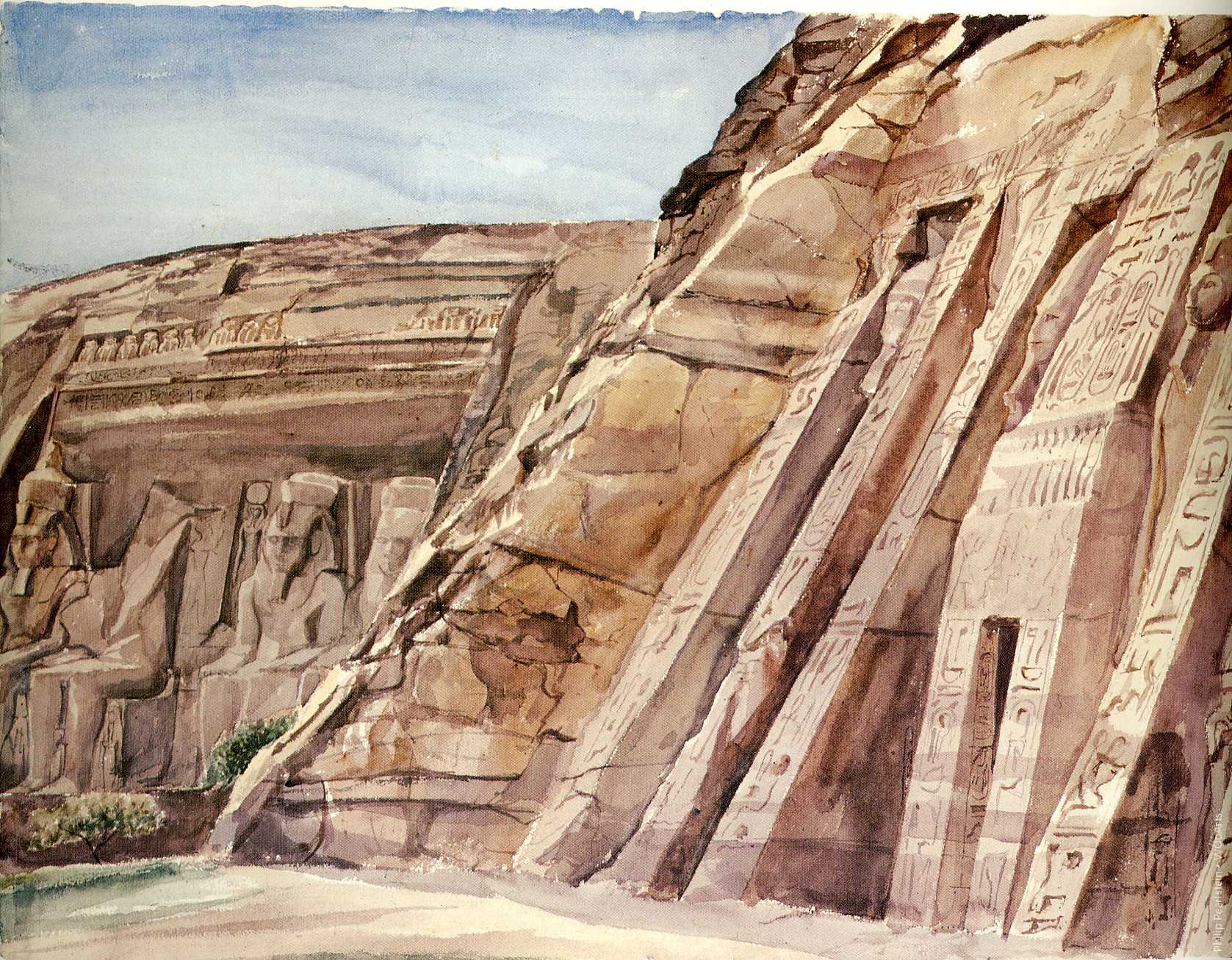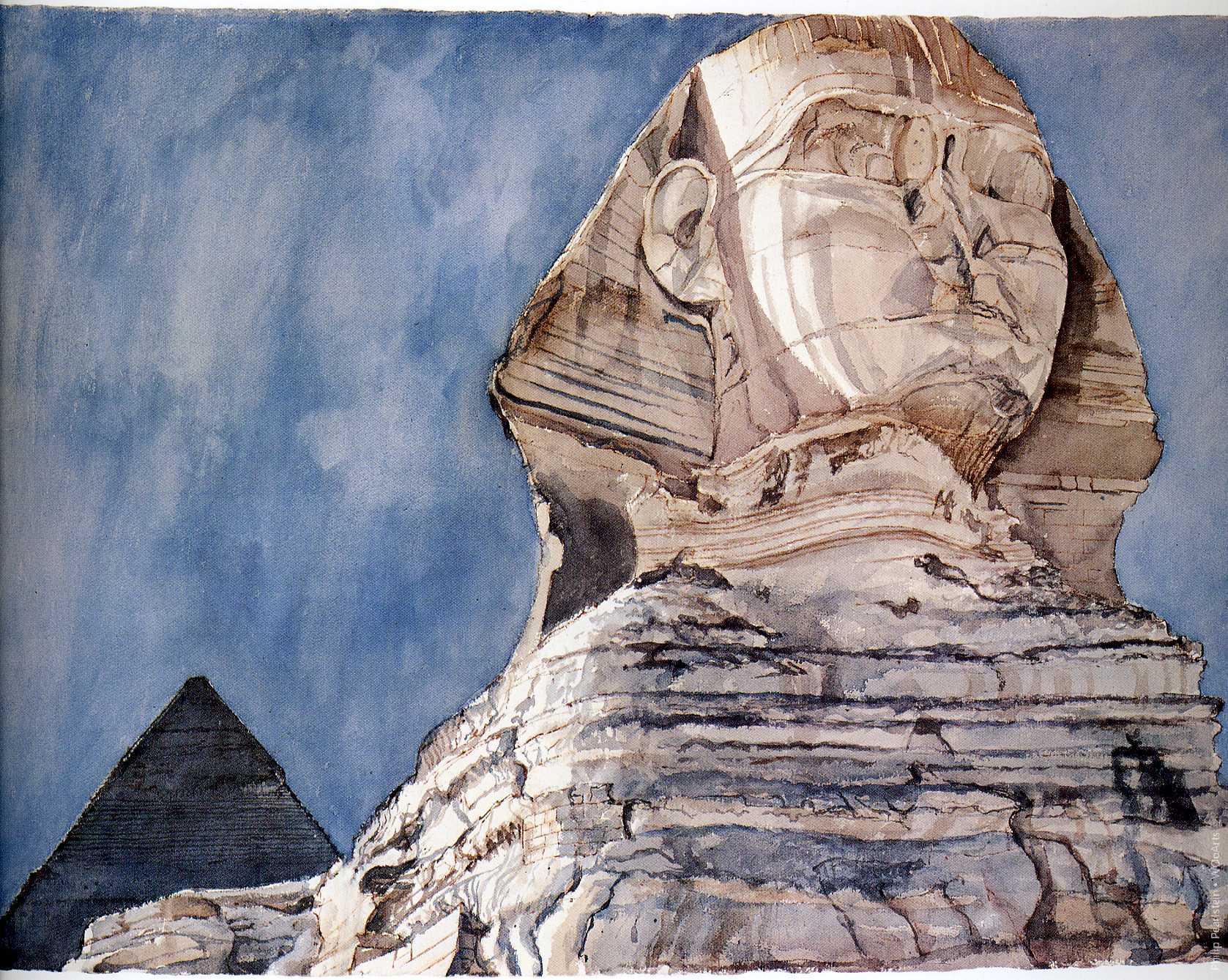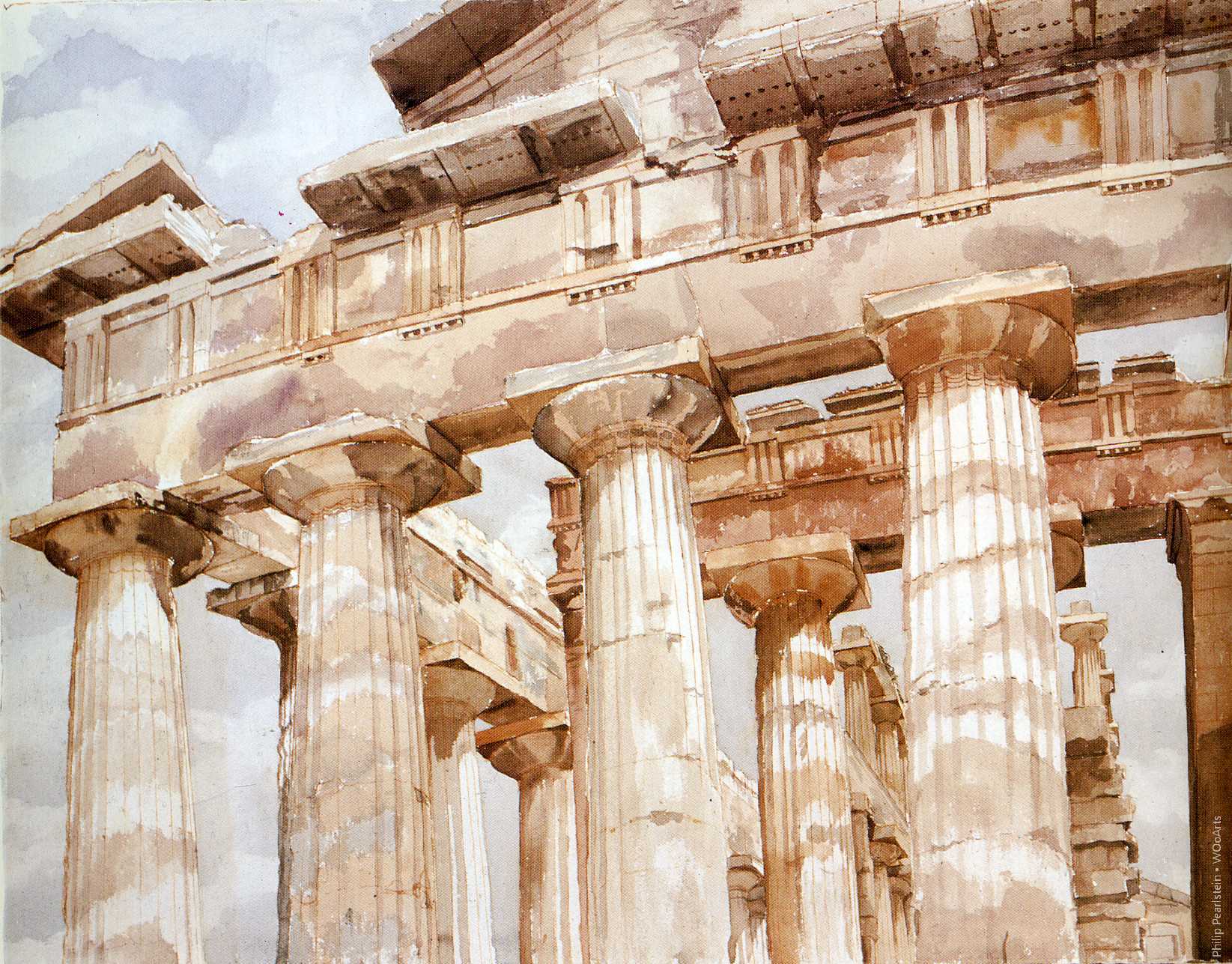Philip Pearlstein: Master of Figurative Realism and Spatial Complexity
Philip Pearlstein’s style and techniques form a nuanced tapestry that goes beyond the mere representation of the human figure. His commitment to objectivity, spatial complexity, and integration of still life elevate his work to a realm where art becomes a contemplative engagement with reality. As an artist and educator, Pearlstein’s contributions continue to shape the trajectory of contemporary realist art, leaving an indelible mark on the canvas of art history. For the latest insights into Philip Pearlstein’s work, it’s advisable to consult more recent sources and exhibitions.
Philip Pearlstein’s career exemplifies a dedication to the craft of painting and a commitment to challenging artistic conventions. His influence on the realist art movement and his ability to capture the human form in a distinctly objective manner have cemented his place as a significant figure in contemporary American art. For the latest information on Philip Pearlstein and his artistic endeavors, it is recommended to check more recent sources.
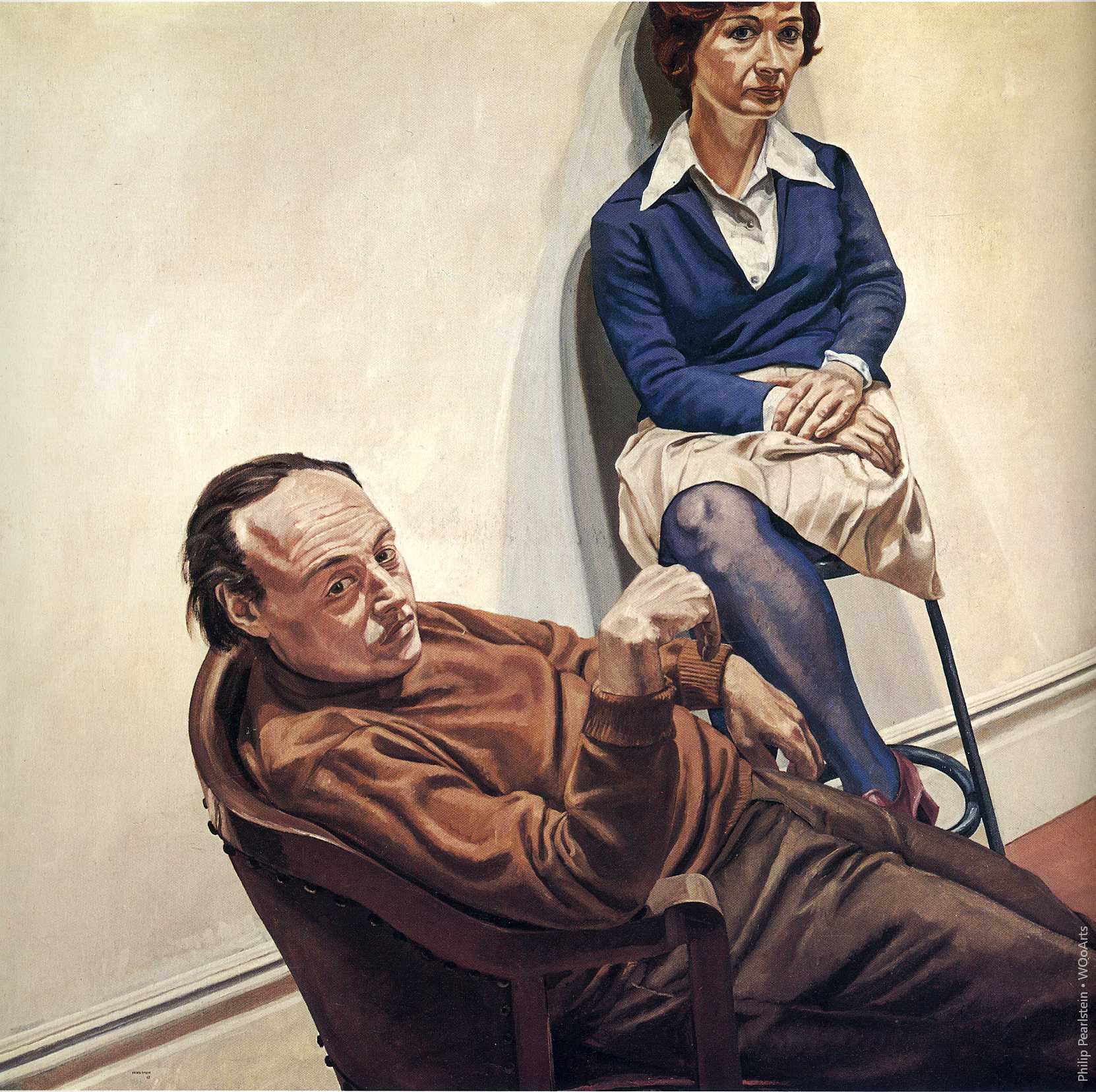
Philip Pearlstein, a luminary in contemporary realist art, has carved an enduring niche with his distinctive style and techniques, primarily focusing on the human figure. His oeuvre serves as a captivating exploration of form, space, and the human experience.
Figurative Realism: At the core of Pearlstein’s artistic identity is figurative realism. Unlike his contemporaries who veered towards abstraction, Pearlstein chose to engage with the human form in a way that was both innovative and deeply rooted in tradition. His subjects, often nude models, are rendered with meticulous detail, capturing the nuances of anatomy and form.
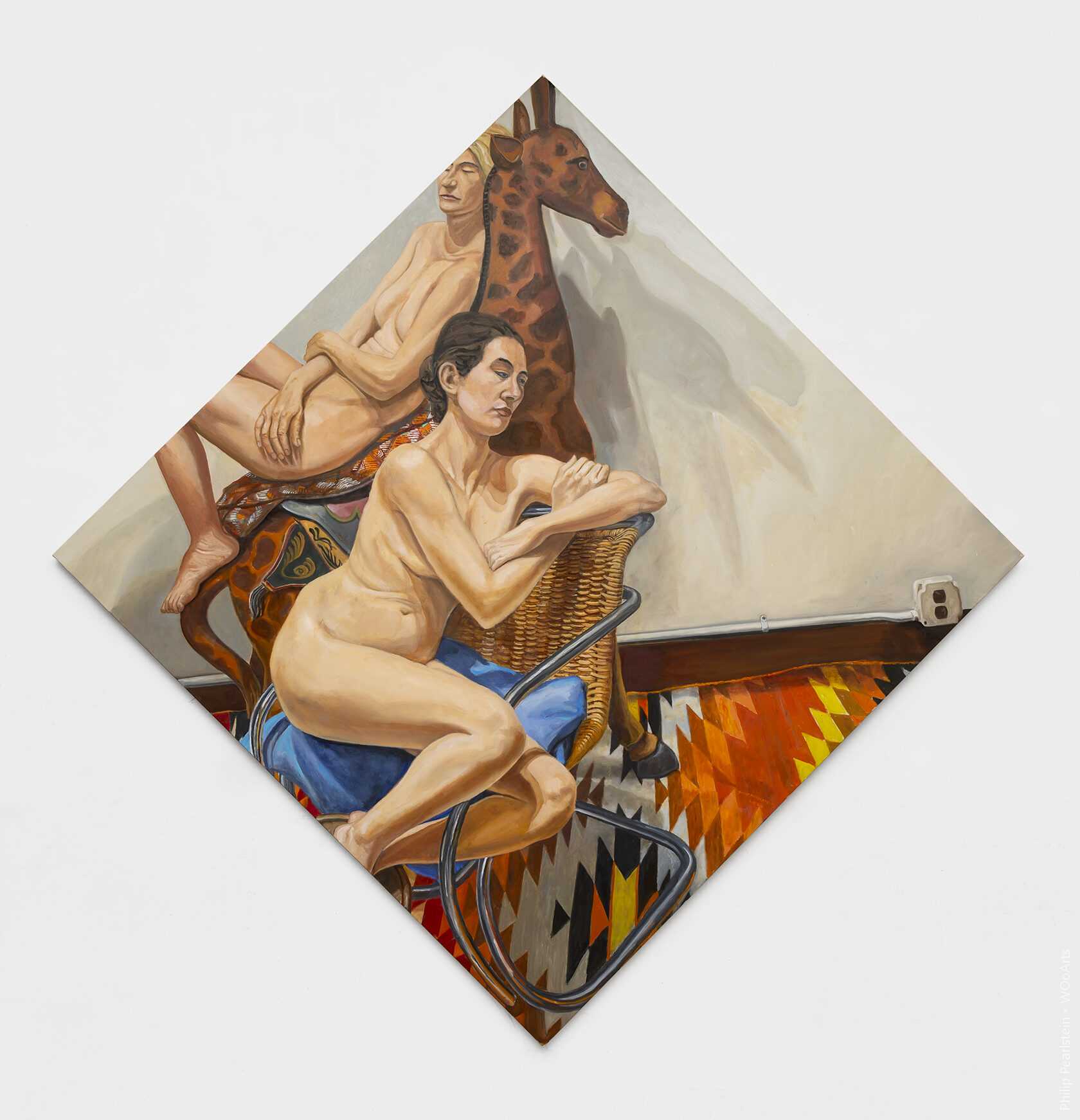
Objective Representation: What sets Pearlstein apart is his commitment to objectivity. His figures are portrayed with a detached precision, eschewing idealization or sentimentality. This deliberate approach challenges conventional perceptions of the nude in art, encouraging viewers to confront the unembellished reality of the human body.
Spatial Complexity: Pearlstein’s compositions are marked by a spatial complexity that invites contemplation. The arrangement of figures in relation to each other and their surroundings creates a dynamic tension within the canvas. His deliberate use of space adds an intellectual layer to his work, prompting viewers to navigate the relationships between forms.

Integration of Still Life: A noteworthy facet of Pearlstein’s technique is the integration of nudes into intricate still-life compositions. This juxtaposition introduces a narrative element into his work, where the human figure becomes an integral part of a larger visual dialogue. Everyday objects share the canvas with the human form, blurring the boundaries between genres.
Muted Palette: Pearlstein’s palette is often characterized by muted tones, contributing to the sense of objectivity in his work. This restrained use of color directs attention to the formal qualities of the composition, allowing the viewer to engage with the interplay of light and shadow on the surfaces of the figures and surrounding objects.

Textural Detail and Brushwork: The artist’s technical prowess shines through in his attention to textural detail. Whether it’s the subtle variations in skin tones or the tactile qualities of fabrics, Pearlstein’s brushwork is both precise and expressive. Each stroke contributes to the overall richness and realism of his paintings.
Evolution of Themes: While Pearlstein is renowned for his figurative work, his artistic journey has seen exploration into diverse themes. Landscapes, cityscapes, and interiors have all become subjects of his keen observational eye. This evolution showcases his versatility and a continual quest for new avenues of artistic expression.
Educator’s Legacy: Beyond his artistic achievements, Pearlstein’s legacy is amplified through his role as an educator. His impact on successive generations of artists is immeasurable. The lessons in objectivity, spatial awareness, and technical proficiency that he imparted have resonated throughout the art world.
Philip Pearlstein, born in 1924 in Pittsburgh, Pennsylvania, is an American painter celebrated for his pioneering contributions to contemporary realist art. Over his extensive career, Pearlstein has become synonymous with the genre of figurative art, particularly known for his depictions of the nude human form.
Early Life and Education: Philip Pearlstein’s artistic journey began with his studies at Carnegie Mellon University in Pittsburgh. Later, he attended the New York College of Ceramics at Alfred University, where he pursued his interest in art. It was during his time at the Brooklyn Museum Art School that he encountered influential figures such as Max Beckmann, shaping his artistic vision.
Emergence of Style: In the mid-20th century, Pearlstein became associated with the burgeoning realist art movement, distinguishing himself from prevailing abstract trends. His early career involved illustrating for magazines, providing financial stability while he honed his craft.
Figurative Realism: Pearlstein’s oeuvre primarily revolves around figurative realism, focusing on the human figure, often in the nude. His compositions, characterized by meticulous detail and a careful arrangement of forms, challenge the viewer’s perception of space and perspective.
Distinctive Approach: What sets Pearlstein apart is his unique approach to the depiction of the human form. Rather than idealized or romanticized representations, his figures are presented in a straightforward, almost clinical manner. This objective portrayal adds an element of detachment, encouraging viewers to engage with the form itself.
Nudes and Still Life: Pearlstein’s work often involves the integration of nudes into elaborate still-life arrangements. The juxtaposition of the human body with everyday objects creates a compelling visual dialogue, challenging traditional notions of the nude in art.
Teaching Career: In addition to his prolific career as a painter, Philip Pearlstein has made significant contributions to arts education. He taught at various institutions, including the Pratt Institute and Brooklyn College. His impact as an educator is reflected in the success of his students who have gone on to make their mark in the art world.
Exhibitions and Recognition: Philip Pearlstein’s work has been exhibited globally, and he has received numerous accolades for his contributions to the art world. His paintings are housed in prestigious collections, and retrospectives of his career have been organized by major institutions.
Evolution of Themes: While the human figure remains a central theme, Pearlstein’s work has evolved over the years. He has explored diverse subjects, including landscapes, cityscapes, and interiors, showcasing the breadth of his artistic curiosity.
Legacy: Philip Pearlstein’s legacy lies not only in his artistic achievements but also in his role as a trailblazer in the resurgence of realist art. His commitment to exploring the human form with unflinching honesty and technical prowess has left an indelible mark on the art world.
Delving into the Meticulous Realism of Philip Pearlstein
Philip Pearlstein, an American artist renowned for his hyperrealistic paintings of nudes, interiors, and still lifes, stands as a prominent figure in the realm of contemporary art. His unwavering commitment to capturing the human form with unsparing detail and precision has earned him widespread recognition and a place among the pioneers of Photorealism.
A Fusion of Realism and Precision
Pearlstein’s paintings are characterized by their meticulous attention to detail, often employing a painstaking grid system to achieve an almost photographic level of accuracy. His subjects, often devoid of emotional expression, are rendered with a raw, clinical gaze that invites the viewer to confront the physicality of the human body.
In his 1981 painting, “Model Reclining,” Pearlstein depicts a nude figure sprawled across a couch, her body illuminated by a harsh, artificial light. The painting is devoid of any sentimental or idealized notions of beauty, instead presenting the figure with an unflinching realism that borders on the clinical.
The Influence of Cézanne and Early Italian Art
Pearlstein’s artistic style is deeply rooted in the works of Paul Cézanne, whose emphasis on structure and form is evident in Pearlstein’s own compositions. Additionally, Pearlstein’s early exposure to Italian Renaissance art instilled in him a profound appreciation for the classical tradition of depicting the human form.
A Pioneer of Photorealism
While Pearlstein’s work is often associated with Photorealism, he deviates from the movement’s reliance on photographs as source material. Instead, Pearlstein paints directly from life, using live models and real-world settings. This approach lends a sense of immediacy and authenticity to his work, distinguishing it from the often mechanical precision of Photorealist paintings based on photographs.
The Impact of Pearlstein’s Work
Pearlstein’s paintings have had a profound impact on the development of contemporary realism, challenging traditional notions of beauty and representation. His work has been exhibited extensively in major museums around the world and continues to inspire and provoke viewers.
From the Philip Pearlstein’s website
Philip Pearlstein was born in Pittsburgh, PA, in 1924. In 1941, his junior year in high school, he received his first recognition when awarded first and third prizes in Scholastic Magazine’s 14th National High School Art Exhibition. Upon graduation from high school in 1942, he enrolled in the Carnegie Institute of Technology but the draft limited his attendance to one year. After discharge from the army in 1946, he returned to Carnegie Tech where he received his BFA in 1949. Upon graduation, he moved to New York City where he pursued work in graphic design and received a Master’s degree in art history from New York University in 1955.
Pearlstein worked as a graphic designer for Life Magazine before becoming an instructor at the Pratt Institute, and then a professor at Brooklyn College; he has also served as a visiting artist at several prestigious institutions throughout the country. His work has been exhibited in several solo exhibitions throughout the United States with paintings in the collections of over 70 public art museums. Pearlstein served as a President of the American Academy of Arts and Letters from 2003-2006 and currently lives and works in New York.
“It is what is painted between the outlines that makes the difference between merely competent painting and really meaningful art.”
—Philip Pearlstein


